There’s no denying that having shrubs in front of our houses adds character to their general appeal. They make homes feel more welcoming, and they inject color and vibrance effortlessly which enhances curb appeal. However, the size of the shrub is something we need to consider. So, how tall should these shrubs be? What are the limitations, and how far should they be planted? We have researched answers for you.
Shrubs should only be around 36 inches tall when they are directly placed in front of your house, especially if they are foundation plants. Taller shrubs that are at least 5 feet in height should be planted at least 80-90 inches away, taking note of their height at maturity. If you want your shrubs to be more compact, be sure to prune and trim them at appropriate seasons.
Determining the height of your shrubs is essential not only for aesthetic appeal but also to make sure that they don’t obstruct the house too much or be a nuisance. Shrubs are supposed to increase the overall appeal of the home, not block it out of view. Keep reading below to learn more about the shrubs that can increase curb appeal as well as the maintenance needed to keep them at an ideal height.
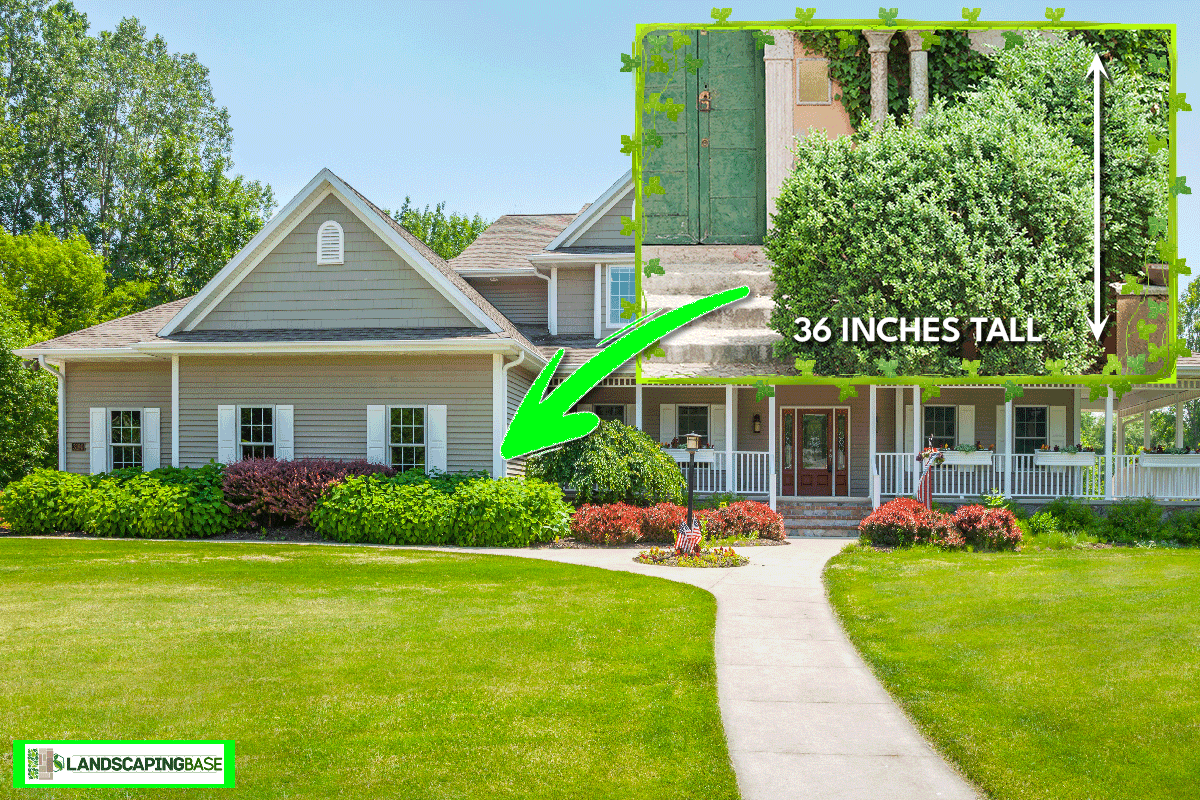
Should privacy hedges be tall?
Unlike shrubs placed near the house’s foundation, the purpose of privacy hedges is to provide a screen that can block out the other side. They are usually placed around the perimeter of your property, so they won’t be directly obstructing light from coming into the window.
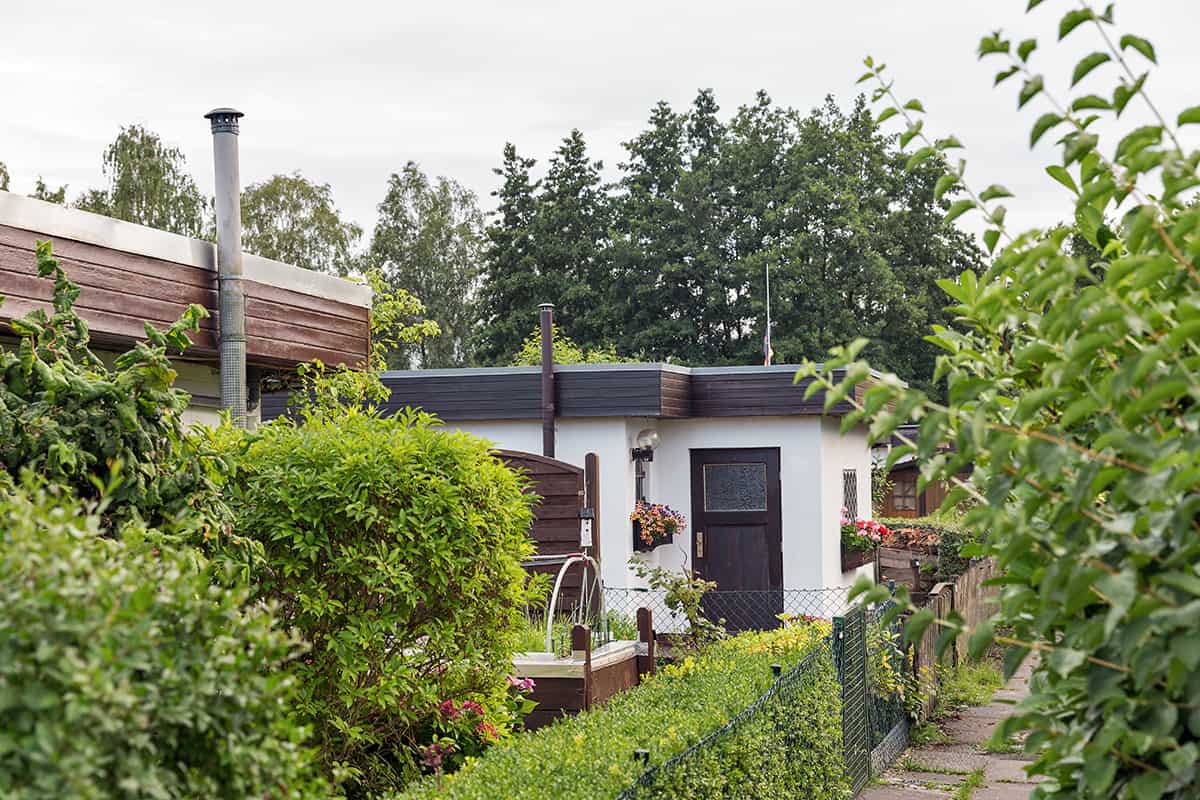
Privacy hedges, to be effective, should be at least 60-80 inches tall. Maintaining symmetry is still essential for visual purposes, so make sure the height of the privacy hedges is proportional to the size of your landscape.
Read: Arborvitae Vs. Juniper For Privacy
How often should you trim and prune shrubs?
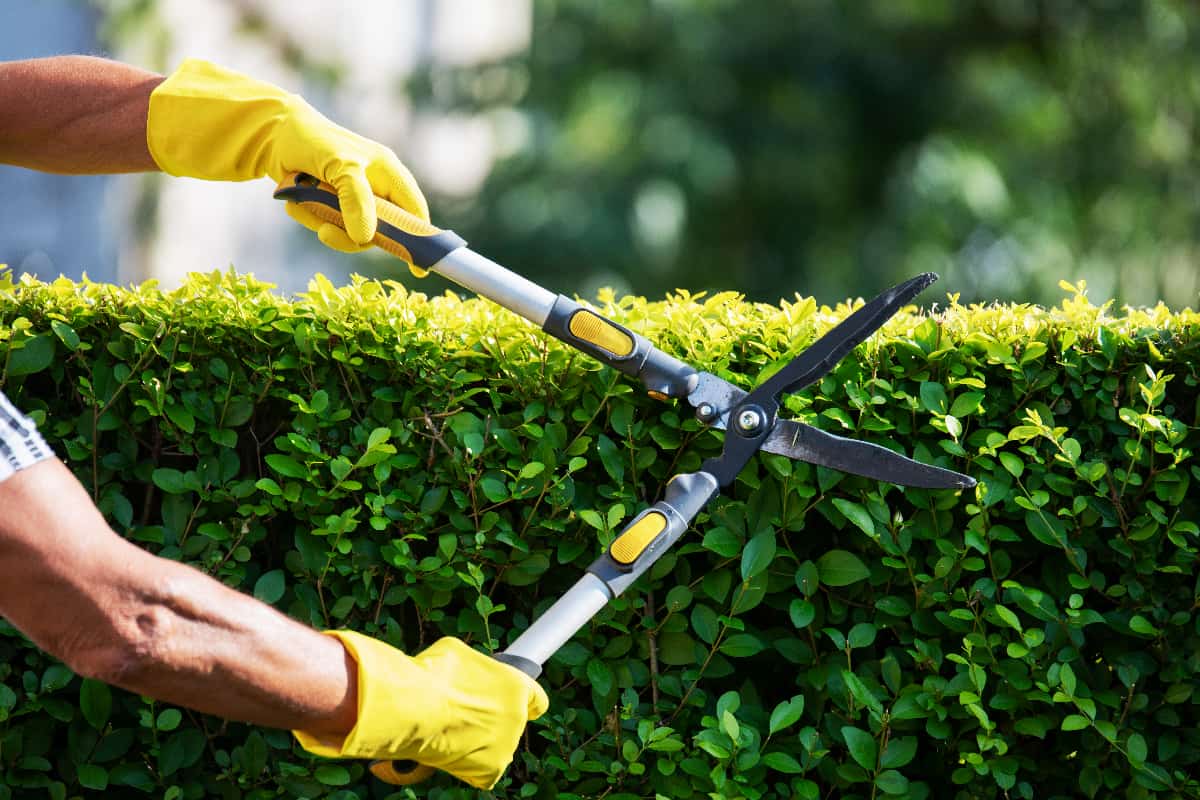
Timing is everything when pruning and trimming. Even if you pick up a routine, it won’t matter if you prune at the wrong season—the shrub can grow awkwardly, or not at all.
It’s best to choose shrubs that need to be pruned within the same season or period so you won’t forget. Some species of shrubs need to be pruned during the late winter, while some need to be pruned during the summer.
Since pruning encourages growth, most shrubs can be pruned during the late winter or early spring. The environment and climate would be kinder to new buds, and they won’t get damaged by icicles.
However, other shrubs, such as arborvitaes (which can be privacy hedges) are best pruned during the start of winter to make them more resistant to snowfall. It all depends on the variety you get.
What to look for when picking shrubs
Not all shrubs will be compatible with your landscape, so it’s important to be familiar with the qualities you want your shrubs to have. Visualize the height of the shrubs, their color; how you want them to be planted.
You also need to determine whether you can maintain them properly.
Here are factors to consider when picking out the shrubs for your landscape.
Read: 15 Zone 9 Shrubs For Partial Shade
Appropriate height
Before choosing your shrub, determine its location first and gauge the appropriate height for each spot. If you want the shrubs to be privacy screens, going for taller shrubs is practical.
However, if you’re planning to simply use them to add character and texture to your landscape, make sure you purchase ones that don’t grow too tall at maturity.
Aside from height, you’ll also want to consider the width of their growth. If you’re planning to get foundation shrubs, make sure they won’t grow too wide that they would block out other plants.
However, if you’re opting for ground covers, having a large width may be more advantageous especially if they get to cover unattractive spots in your landscape.
Texture and aesthetic appeal
This is one of the main reasons we get shrubs, aside from their refreshing qualities and sometimes medicinal benefits.
Evergreen shrubs give a year-round appeal, making your landscape look lush and refreshing regardless of the season. Their leaves don’t fall out, unlike deciduous shrubs that shed during winter or summer.
If you want to make your landscape more vibrant, choose flowering shrubs or ones that change color during the fall to give off seasonal appeal.
Sunlight Requirements
Your shrubs need to be compatible with the climate in your area. You also need to make sure that your landscape will be able to receive the appropriate amount of sunlight to make your shrubs thrive and flower.
Flowering shrubs need to be exposed to at least 6 hours of full sunlight to be able to grow blooms. If your area doesn’t receive a lot of sunlight, make sure to get shrubs that can survive—or thrive—in partial or full shade.
If you plant sun-loving shrubs in an area without adequate sunlight, you may end up with leggy flowers and shrubs that can ruin their visual appeal and overall health.
Year-round appeal
Some flowering shrubs lose their blooms in specific seasons, but there are some that never seem to lose flowers all year-round.
These shrubs will add visual character and beauty to your landscape, and they will enhance curb appeal especially if you strategically plant them symmetrically.
There are also some plants that change color during the fall, transforming to a rich burgundy that can add warmth to your landscape.
What shrubs should you plant in front of your house?
There are a lot of shrubs that can enhance your landscape. However, there are a lot of options available, so it can be difficult to narrow down your choices.
The key to choosing the shrub for your home is to ensure that you have the time and resources to meet the plant's needs and that they can survive in your climate. Regardless of their potential, you won’t benefit from them unless they can thrive naturally.
Here are shrubs you can consider putting in front of your house.
Boxwood
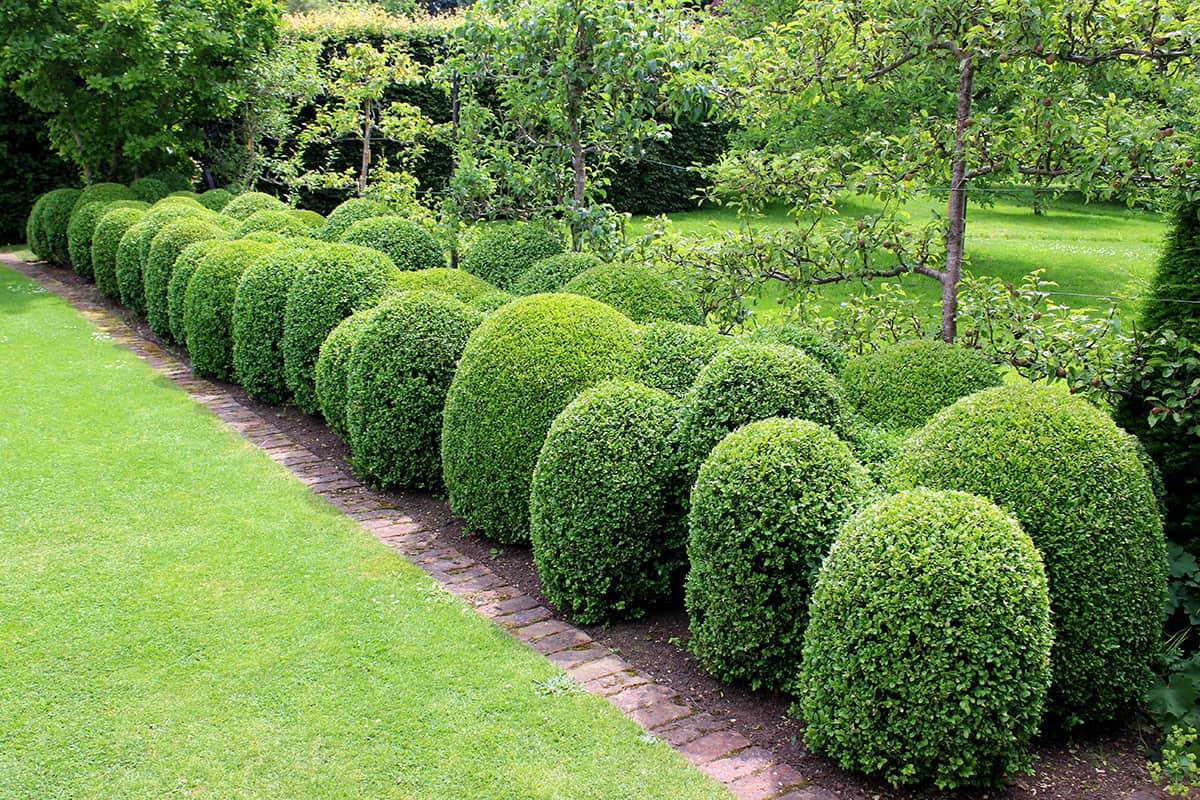
Boxwood shrubs are visually versatile as they fit into any kind of landscape.
They are easy to trim, so you can form them any way you like. These shrubs should be pruned during early spring so they can have a bushy growth during the next season.
Make sure to plant them on well-drained soil. They survive in full sunlight to partial shade, but place them somewhere they can be protected from strong winds.
Rose shrub
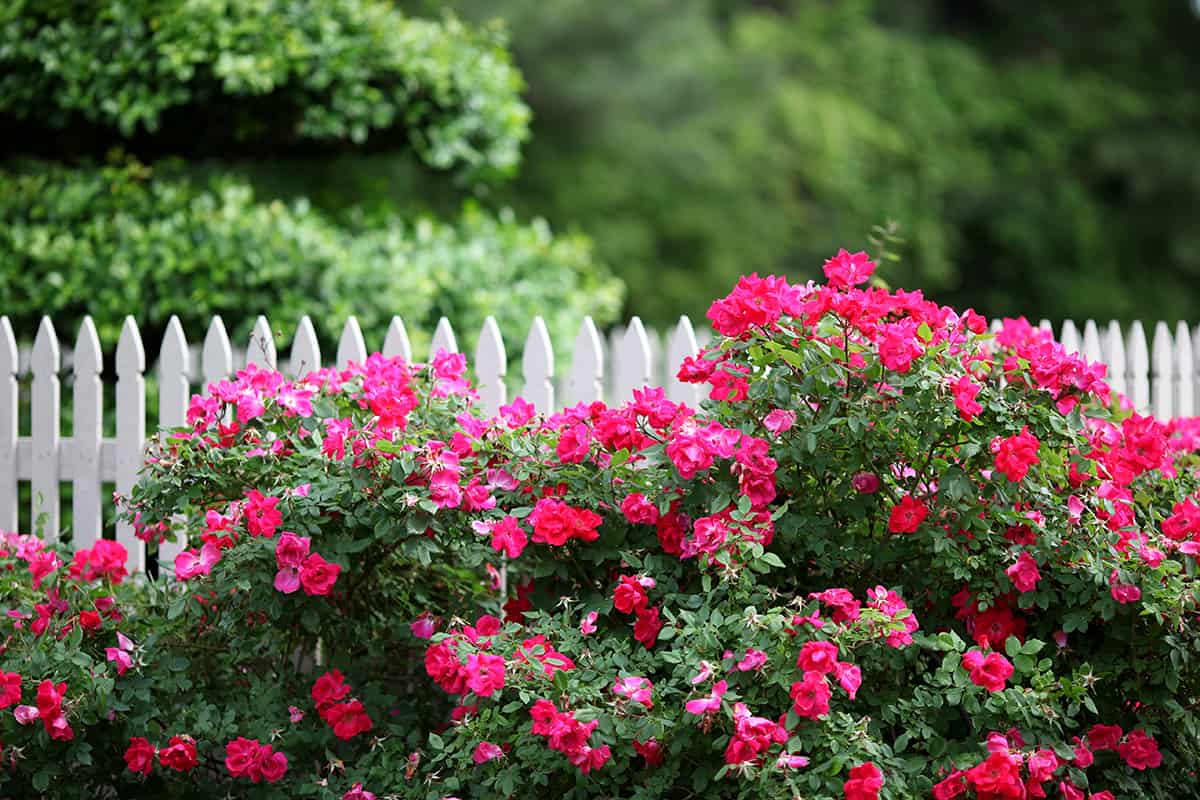
Rose shrubs are one of the most visually-appealing plants you can have in your landscape. They can make the space feel more romantic, especially if they’re well taken care of and have a bushy form.
Rose shrubs can be pruned yearly during the late winter so the buds can grow during the spring. Make sure to plant them where they can access full sunlight so they won’t be leggy, which is what happens when they inevitably try to reach for sunlight.
Dwarf Japanese Maple
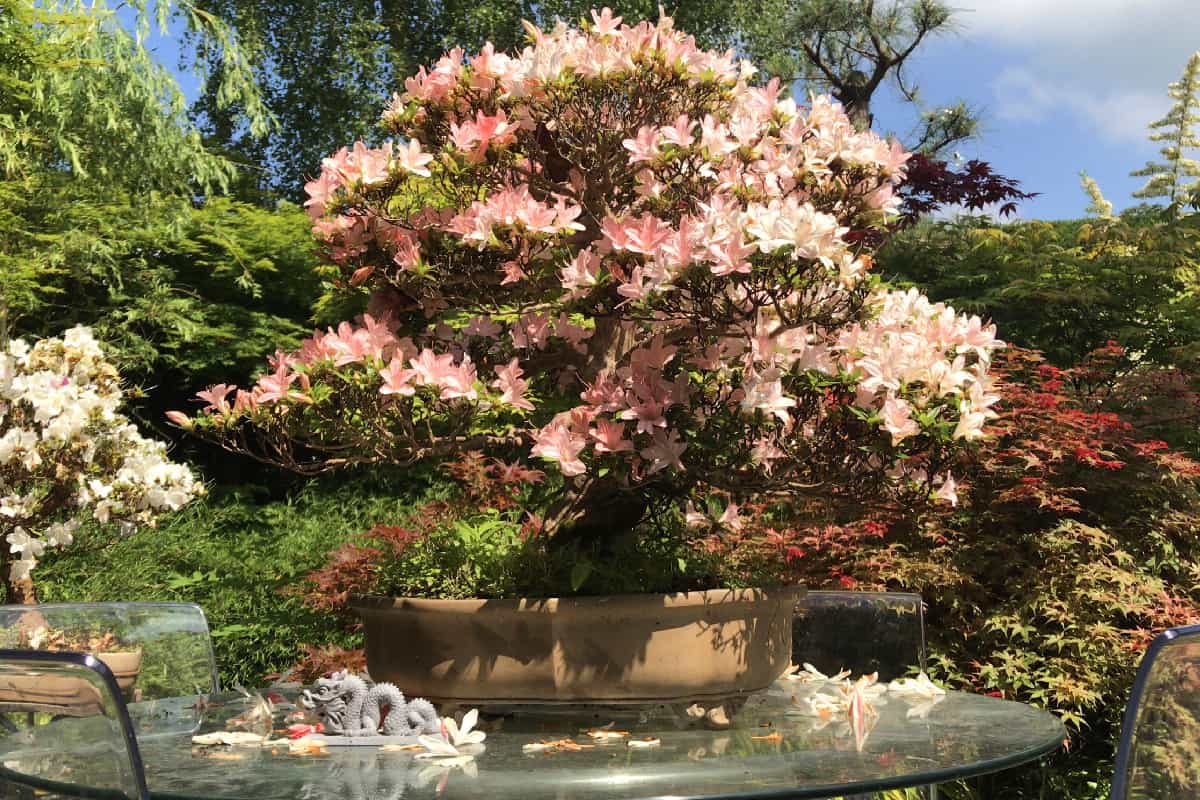
Dwarf Japanese Maples are small trees that grow attractive light foliage and purple blooms. They can inject vibrance into your landscape.
They grow up to 7 meters tall, so it’s best to plant them around 90 inches away from your house’s foundation.
They don’t require aggressive pruning; you’ll only need to prune them if you wish to make their form more aesthetically pleasing.
Final Thoughts
The height of your shrub will make or break the look of your landscape and determine whether they will be beneficial, or if they will be a nuisance and block your view of the scenery, or block out natural light.
This is why planning your landscape thoroughly is important; it’s not enough that you simply choose shrubs and have them planted wherever. Make sure to plant your shrubs in ideal areas where they can have access to everything they need.

![man replanting herb with yellow flowers for use in landscaping. 15 Perennials That Absorb Water [Incredible Choices For Foundation Landscaping]](https://landscapingbase.com/wp-content/uploads/2022/09/man-replanting-herb-with-yellow-flowers.-15-Perennials-That-Absorb-Water-600x400.png)
![Big custom made luxury house with nicely trimmed and landscaped front yard, South Facing Front Yard Landscaping Ideas [17 Ideas To Increase Your Curb Appeal]](https://landscapingbase.com/wp-content/uploads/2022/09/BIGCUS1-600x400.jpg)
